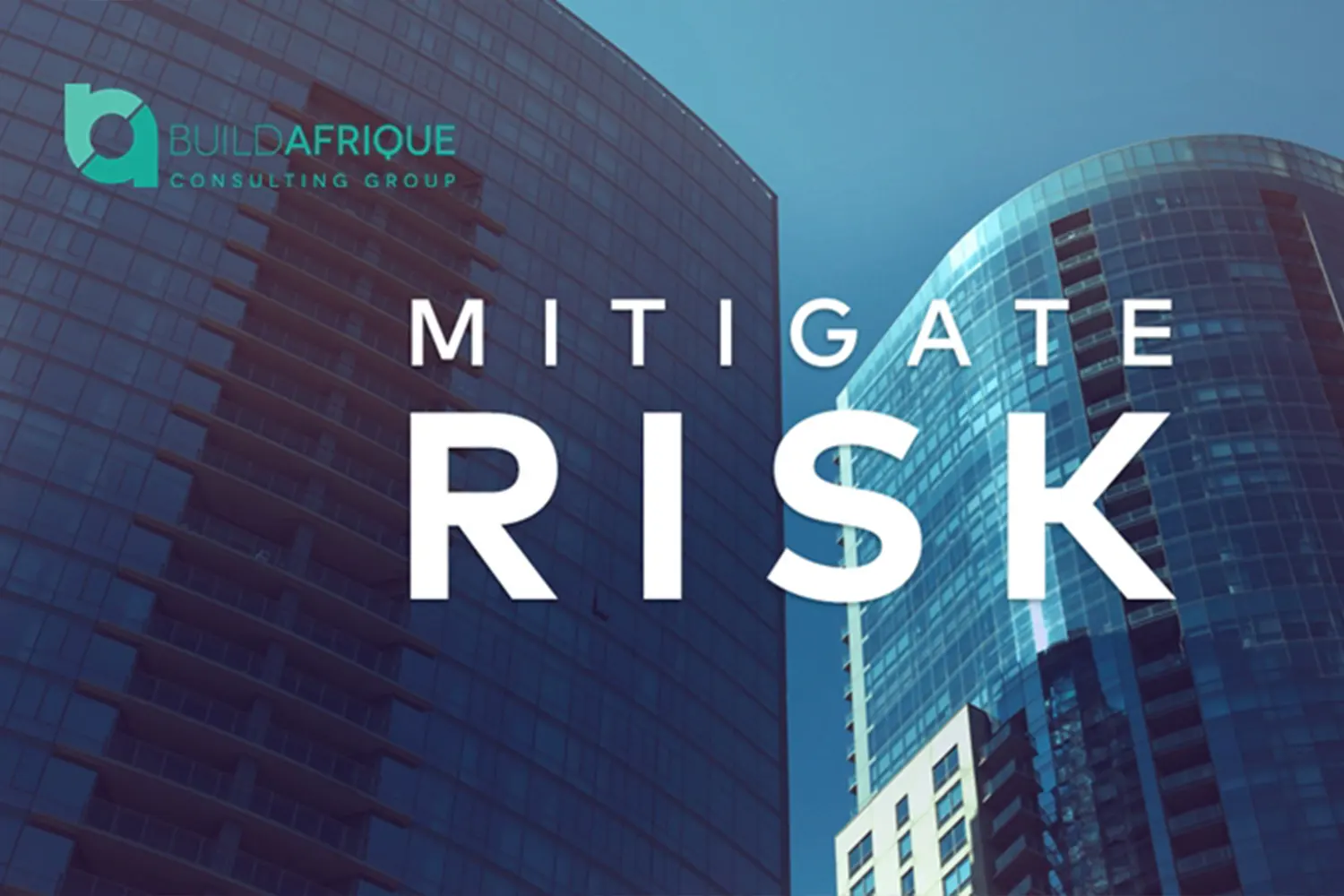Insights
Kenya Real estate Risks Management – Top 6 Risks that are likely to stop your Investment from Taking-Off and how to manage as an Investor

Investing involves risks and rewards – and typically, the higher the risk the more prominent the potential for significant gains and losses. Intuitively, we understand that it’s important to go for high-risk investments in order to maximize returns. But first, we figure out how much risk is appropriate and ways we can quantify it to figure out if it is a chance we are willing to take. In private equity real estate, the fact that physical assets are bought provides investors a level of solace. Yet, there are many risks involved in real estate investments that have to be considered in conjunction with the expected value of the investment. Having frames of reference to measure risk ensures that the investment matches the investor’s needs, objectives, and tolerance. Here are the top six risk factors that can fail a real estate investment project.
Unsystematic Risks:
These are defined as risks that are specific to the asset and the asset’s business plan. They are particular to a specific property.  Construction, for example, will add more risk to a project because it limits rent collection at this particular time.
Construction, for example, will add more risk to a project because it limits rent collection at this particular time.
Also part of unsystematic risks is the entitlement risk. This is the chance that a government agency with jurisdiction over a project will fail to provide approvals at the right time or fail to provide approvals all together either during the beginning of construction or in later construction phases.
Like environmental risks are specific to a project, location, and construction risks are also idiosyncratic needs. Managing this type of risk involves conducting in-depth research at the microeconomic level of the market.
This is because unsystematic risks account for most variation in the overall risk of an individual project over time rather than market risks.
Replacement costs risks:
As demand for space in the market drives rent rates higher in properties, these costs are legitimizing new development, thus increasing supply risk. Such is the commercial real estate state of affairs in Nairobi. With a growing supply of grade A offices, residential property with diversified features, newly developed real estate property can end up obsolete in light of the fact that there are superior property in the market with comparable rents and sale prices. It may not be feasible for an investor to raise lease rates, or even attain decent occupancy rates. Assessing this circumstance calls for understanding a property’s substitution cost to know whether it’s economically possible for another property to lure existing tenants and potential buyers. To figure out replacement costs, consider a property’s asset class, location and the sub-market in the area while factoring in the valuation of other areas to capitalize on to create sustainability.
General market risks:
The real estate market is known for its ups and downs as economic conditions change. Hence, variables such as interest rates, inflation and market trends coupled with their effect on the general economy play a major role in dictating the value of an investment Investors cannot eliminate market shocks, but they can hedge their bets against booms and busts with a differentiated portfolio and strategy in view of the general economic situations. When entering the real estate investing business, investors ought to dependably know about this dynamic, understand and remain up-to-date regarding the market capacities, then prepare ahead of time to be able to forecast real estate market downturns.
Structural Risk (Capital Structure Risks):
The growing innovations in financing real estate investments demonstrate the rising willingness for partnerships among investors.  Structural risks have nothing to do with the structure of a building but the venture’s budgetary structure and rights it provides individual participants. For example, a senior secured loan gives the lender an advantage over “mezzanine” or subordinated debt since senior debt is the first to be paid; it has top consideration in case of liquidation. Equity is the last payout in the capital structure, so equity holders confront the highest risk. Lack of alignment may create a divergence of motivations among investors. For instance, in the event that one is a limited partner in an arrangement that has a worthwhile profit split, and a partnering investor has fundamentally less money invested, they will be more motivated to take risks. This may be the case with hired management who may be motivated to acquire high returns against lower contributions. High leverage levels translate to high risks in an investment venture.
Structural risks have nothing to do with the structure of a building but the venture’s budgetary structure and rights it provides individual participants. For example, a senior secured loan gives the lender an advantage over “mezzanine” or subordinated debt since senior debt is the first to be paid; it has top consideration in case of liquidation. Equity is the last payout in the capital structure, so equity holders confront the highest risk. Lack of alignment may create a divergence of motivations among investors. For instance, in the event that one is a limited partner in an arrangement that has a worthwhile profit split, and a partnering investor has fundamentally less money invested, they will be more motivated to take risks. This may be the case with hired management who may be motivated to acquire high returns against lower contributions. High leverage levels translate to high risks in an investment venture.
Ideally, an investor should require more on returns to meet such debt obligations. As a force multiplier, it can move things along quickly during initial cash outlays and consequent cash flows but at the same time cost a lot to investors and quickly if the project loans are under stress, typically when returns on assets aren’t sufficient enough to cover premium installments. As a rule, leverage in financing capital structures should not exceed 75%, including mezzanine and preferred equity as these obligations, sit ahead of common equity in the payment order. Returns ought to be created fundamentally from the performance of the real estate venture, not through excessive leverage. Investors should understand that the importance of quantifying leverage in any capital structure. Investors should also inquire approximately how much leverage is utilized to capitalize an asset and ensure they are receiving returns proportionate to the risk.
Cap rate risk:
Of all financial assumptions, cap rate risk is one of the extreme due to the dramatic effects it has on a property’s exit value. The cap rate is the ratio between net operating income and the current value or sale price of a property. It helps determine potential returns on an investment. Prevailing cap rates for various real estate asset classes move in ranges and are subject to market activity, supply, and demand, for that specific class. A little movement in cap rate can substantially affect the residual value of a project and, thus, the profitability or loss in a transaction. For projects sold in units like the majority of real estate projects, an investor may incur higher losses in the subdivision. While analyzing an investment opportunity, it is important for an investor to pay attention to the entry and exit cap rates to compare attractiveness to other competitive assets and determine whether the assumed exit cap rate is defensible over the commended holding period.
Investment Consultant & Business Plan risks:
The success of an investment venture shall depend on the experience and ability of the Investment Consultant or Asset Manager to execute viable investment models and business plans that deliver expected results to stakeholders. For example, the Investment Consultant or Asset Manager is charged with executing the business plan at a strategic level. The Finance Consultant or Asset Manager’s expertise and attentiveness to the asset are paramount in translating a business plan into a successful outcome. If they fail to take the right steps into delivering expected results, the property may not offer returns. Similarly, poor property management may hinder generation of returns. Outstanding property management is critical to the day-to-day on-site operations of the asset as it will have a direct effect on its performance.
Real estate investments are a relatively safe investment. Nevertheless, most do not guarantee 100 % profitable investments. The above risks are the most common in association with real estate investing and should be considered before starting a real estate venture. Successful projects can be achieved through real estate market analysis in addition to specific asset class analysis to avoid these risks.
This article is written by Buildafrique Consulting Group; a Kenya Real Estate Consultant and Development Solutions provider that offers End-to-End Financial, Development Management, and Investments Solutions in Real Estate, to allow Developer, Investors, and prospective Home Owners manage risks and realize value for their investments in a fast-evolving Real Estate market.
Contact Us today for Solutions to your Challenge in Real Estate Investments and Project Development:
- Email: [email protected]
- Tel: +254 722 474285 / + 254 20 8058493
- Website: www.buildafrique.com
Related
Insights
Feasibility Studies Professionals and Expert Consultants in Kenya
Buildafrique are Feasibility Studies Professionals in Kenya and Market Research Experts…
Infrastructure Project Financing Consultants Company In Kenya
Buildafrique is an Infrastructure Project Financing Consultant Company in Kenya that…
Investment Projects and Real Estate Funding Source Company In Kenya
Buildafrique is a Kenya Real Estate Funding and Finance Source Consultant Company located…
Construction Project Management Consultant Experts In Kenya
Buildafrique is a Kenya Construction Project Management Consultants & Experts Company…






